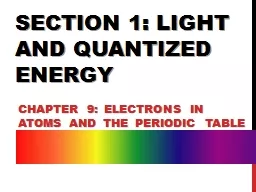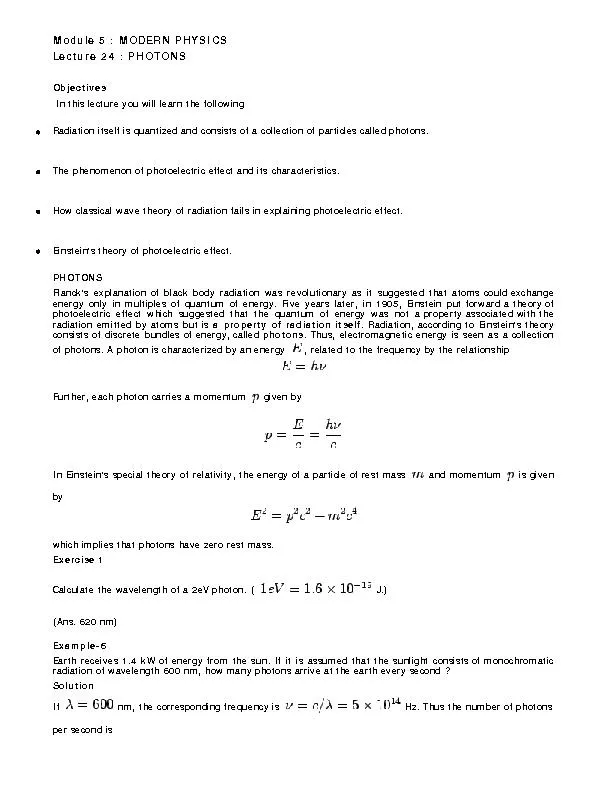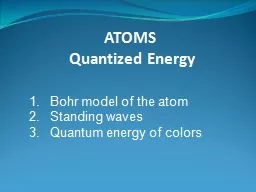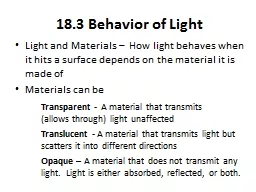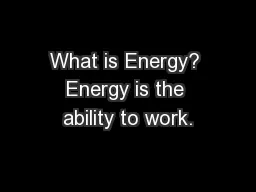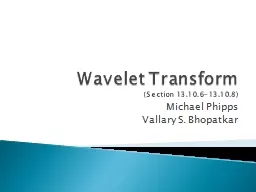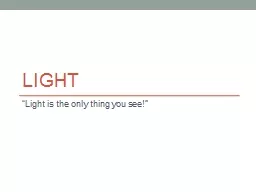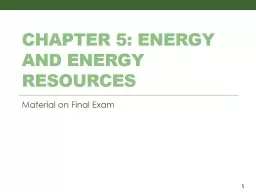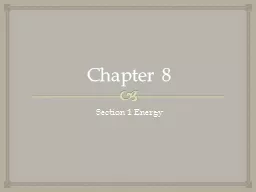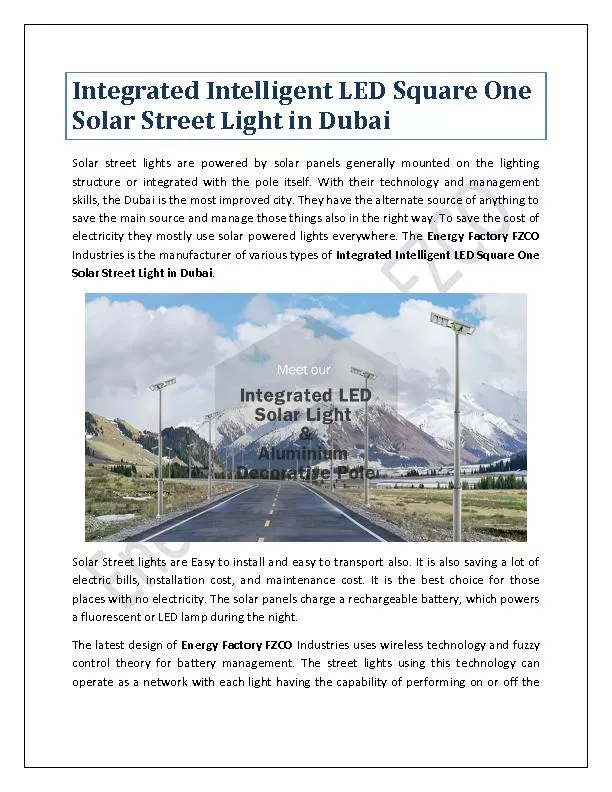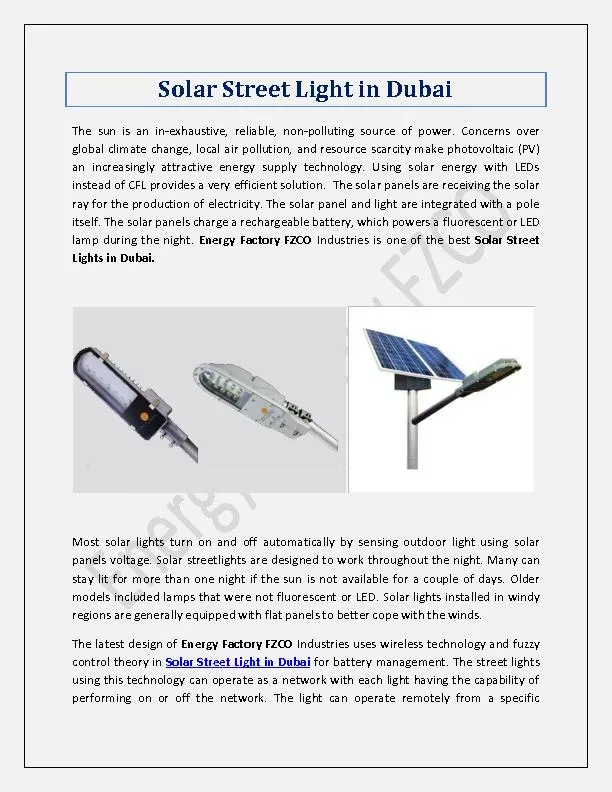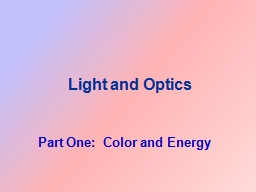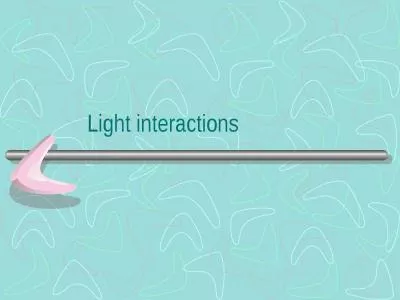PPT-Section 1: Light and Quantized Energy
Author : jane-oiler | Published Date : 2018-09-22
Chapter 9 Electrons in Atoms and the Periodic Table Learning Goals Compare the wave and particle natures of light Define a quantum of energy and explain how it is
Presentation Embed Code
Download Presentation
Download Presentation The PPT/PDF document "Section 1: Light and Quantized Energy" is the property of its rightful owner. Permission is granted to download and print the materials on this website for personal, non-commercial use only, and to display it on your personal computer provided you do not modify the materials and that you retain all copyright notices contained in the materials. By downloading content from our website, you accept the terms of this agreement.
Section 1: Light and Quantized Energy: Transcript
Download Rules Of Document
"Section 1: Light and Quantized Energy"The content belongs to its owner. You may download and print it for personal use, without modification, and keep all copyright notices. By downloading, you agree to these terms.
Related Documents

